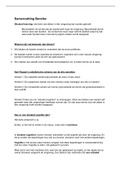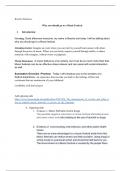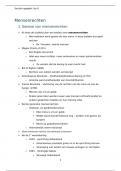Monday 30th May 2016
This article will delve into the different factors that could lead to abusive situations,
including the different individuals’ who at the highest risk of being a victim of abuse,
where they are likely to be abused and also the different contexts of abuse. I will then
go on to assess the likely immediate effects of two different forms of abuse on the
adults being abused regarding their health and wellbeing. Lastly, I will finish off by
evaluating the potential long term effects of these two types of abuse on the
individuals’ health and wellbeing.
P3: People with learning disabilities are at a high risk of being a victim of abuse in
comparison to those who do not have learning disabilities. Learning disabilities can
range in the severity, ranging from mild learning disabilities that do not interfere much
with the individuals’ day to day life and abilities, while learning disabilities can also be
very severe and affect how the person can function daily. People with learning
difficulties are at a higher risk of being abused because they rely on help, support and
personal care from other people who could take advantage of them as they are more
vulnerable. If someone with a learning difficulty is dependent on others for personal
care (e.g. bathing, toileting, washing, dressing) it automatically puts them at a higher
risk of physical and sexual abuse. In this kind of scenario, this kind of abuse towards
people with learning difficulties could take place within their own home, day care and
hospitals, by family members, carers, partners and other healthcare professionals
such as nurses if they are in hospital. It may be difficult for people with learning
difficulties to report abuse if they have a severe learning disability, because they may
not be able to communicate what has happened to them; for example, if they cannot
speak and don’t use sign language.
People with physical disabilities are at a higher risk of experiencing emotional/verbal
abuse than those people who do not have physical disabilities. This is because people
may comment on their disability because they look/act different to most others, so this
makes them an easy target. This abuse could potentially develop into bullying if the
perpetrators are in constant contact with the physically disabled person, for example
in community care, day care or residential care. Physically disabled individuals could
be emotionally/verbally abused in public or in hospitals for example, typically by
strangers or other service users. People who are physically disabled are also at a
higher risk of physical abuse because they may need to be handled by others for
example whilst getting dressed or bathed, or by moving them from one area to the
next. If they are relying on others for this type of help, it leaves them at a higher risk of
physical abuse – even if the abuse was not intentional. They are at more risk of being
physically hurt or injured as they are relying on others for this kind of support listed.
Physical abuse can take place in lots of environments, including their own home,
independent living, the GP, residential care, physio and hospitals.





